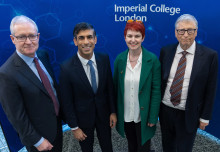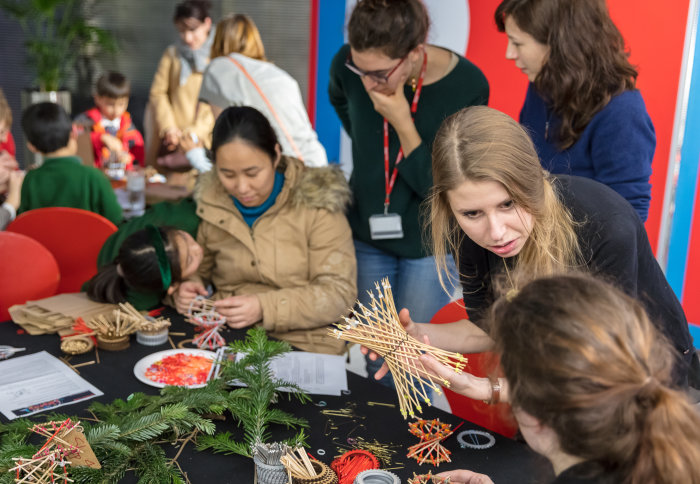

The wonders of the mathematical universe were on show at the latest Imperial Lates public evening event.
On Thursday 6 December an Imperial Lates event counted down to Christmas with an evening celebration of all things mathematical. With DJ Digits playing festive tunes in the background, visitors to the ’Xmaths’ event were able to talk to researchers and students from across Imperial and explore the wonders of the mathematical universe.
Imperial Lates events invite the public to learn and engage with the exciting research that is happening across the College. By celebrating science through the creativity and passion of Imperial academics, they aim to provide a platform for the researchers to engage with the broader community.
Something for Everyone
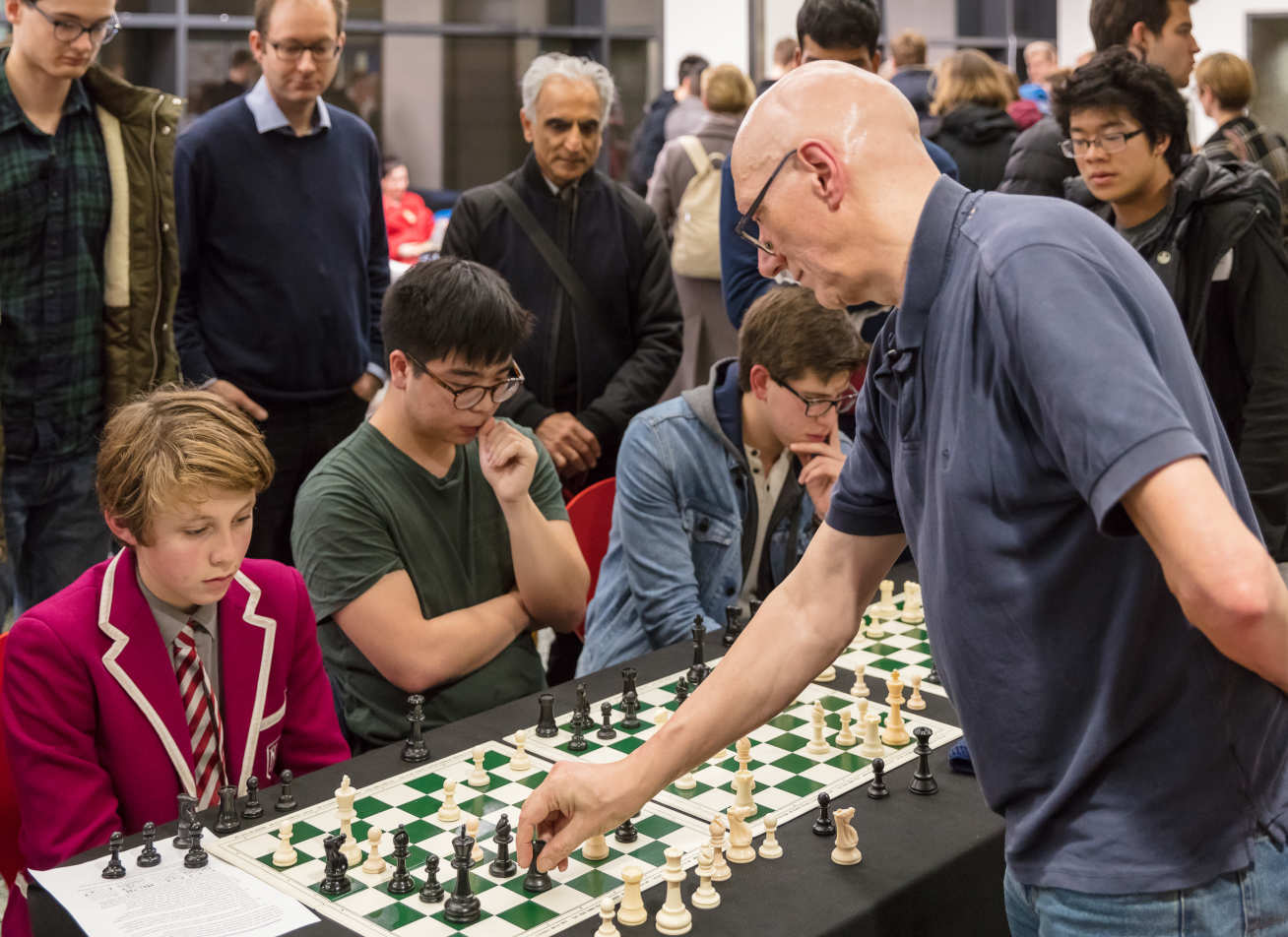
The diversity of activities in the Xmaths Lates was sure to provide something for everyone. Visitors were able to not only listen to scientists explaining their research but to get personally involved in a variety of activities and discover the hidden mathematical beauty maths behind them.
Jonathan Mestel, a professor of applied mathematics at Imperial and a chess grandmaster himself, challenged visitors to multiple simultaneous chess games while explaining the links between the ancient game and modern mathematics.
At the GeomeTREE station, those running short on Christmas decorations at home, were able to make their own hyperboloid ornaments. Meanwhile the life of a mathematician and the mathematicians’ love for numbers were examined during multiple panel discussions and the intricate changes in brain activities of improvising musicians were revealed in a live musical performance by the artists from the Guildhall School of Music and Drama.
Chocolatey Numbers
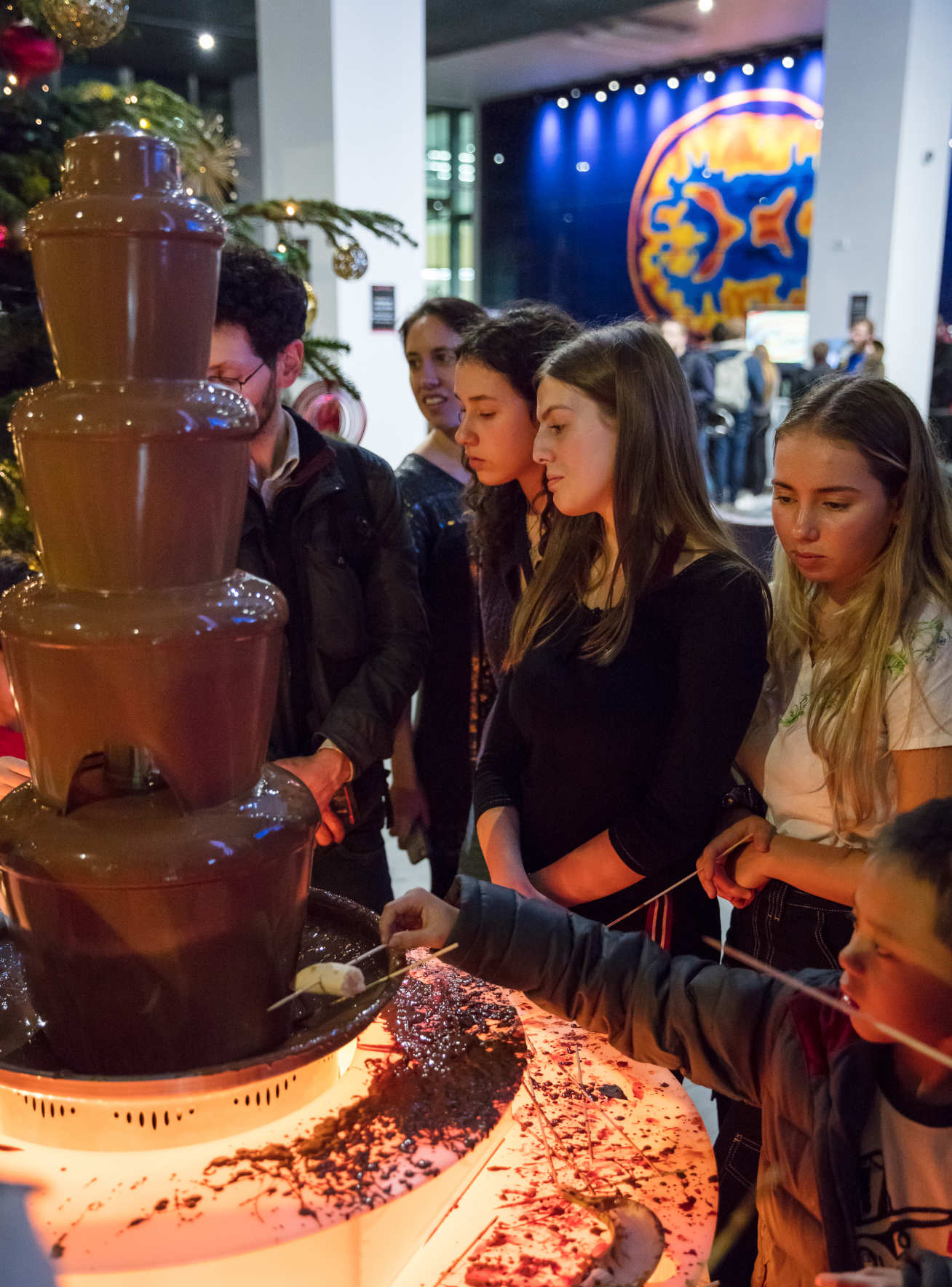
Mathematicians are no different from the rest of us – they too have a soft spot for chocolate. And chocolate, abundant as it is during the Christmas period, turns out to be a perfect medium for explaining some interesting properties of non-Newtonian fluids.
Dr Adam Townsend, a postdoctoral researcher at Imperial, gathered large crowds of listeners around a delicious chocolate fountain to explain the equations governing the mouth-watering chocolate flows. While dipping bananas, biscuits and marshmallows into the chocolate fountain visitors learned how the same equations can be more broadly applied to other situations such as volcanic lava flows and even to better our understanding of how blood clotting works. A visitor who also brought two of her kids to the Lates event said: “I wish the maths in school was as fascinating”.
Chocolate was also a star attraction at the workshop on Platonic solids. While trying their chocolatier skills at making truffles in the shape of the five Platonic solids – tetrahedron, cube octahedron, dodecahedron and icosahedron – participants to the hands-on activity learned about the Greek philosopher Plato and the mathematical theory on which the geometries of the Platonic solids are based.
Making a Splash
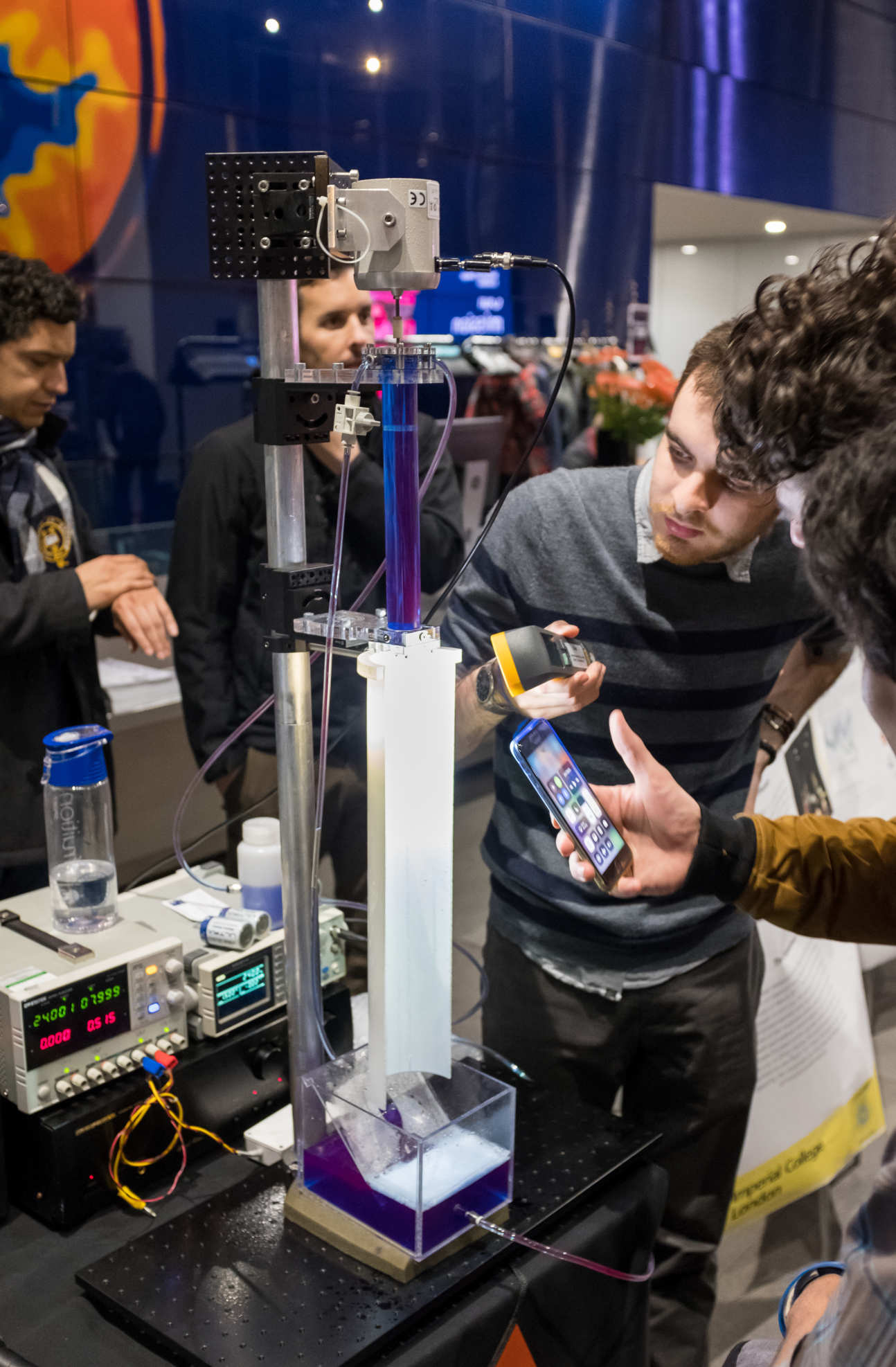 The beauty of falling droplets attracted many visitors to Dr Radu Cimpeanu’s table, where he explained the maths governing the fluid dynamics in jet streams and droplet formation. People were able to try-out their vocal-skills and to rediscover the artist inside by creating different patterns of droplets and learn how mathematicians can model the droplet impact.
The beauty of falling droplets attracted many visitors to Dr Radu Cimpeanu’s table, where he explained the maths governing the fluid dynamics in jet streams and droplet formation. People were able to try-out their vocal-skills and to rediscover the artist inside by creating different patterns of droplets and learn how mathematicians can model the droplet impact.
The research used to understand how the liquid droplets form has wide ranging applications including the correct ejection of ink inside printers, fuel sprays inside cars engines, aircraft icing prevention and blood spatter analysis.
When asked what has inspired him to do this type of research Dr Cimpeanu said: “This is probably one of the most fascinating fields to work in, there is so much going on, and you can see the real impact of your work. It is rewarding to work with collaborators, work with industry and make sure that your work is valued”.
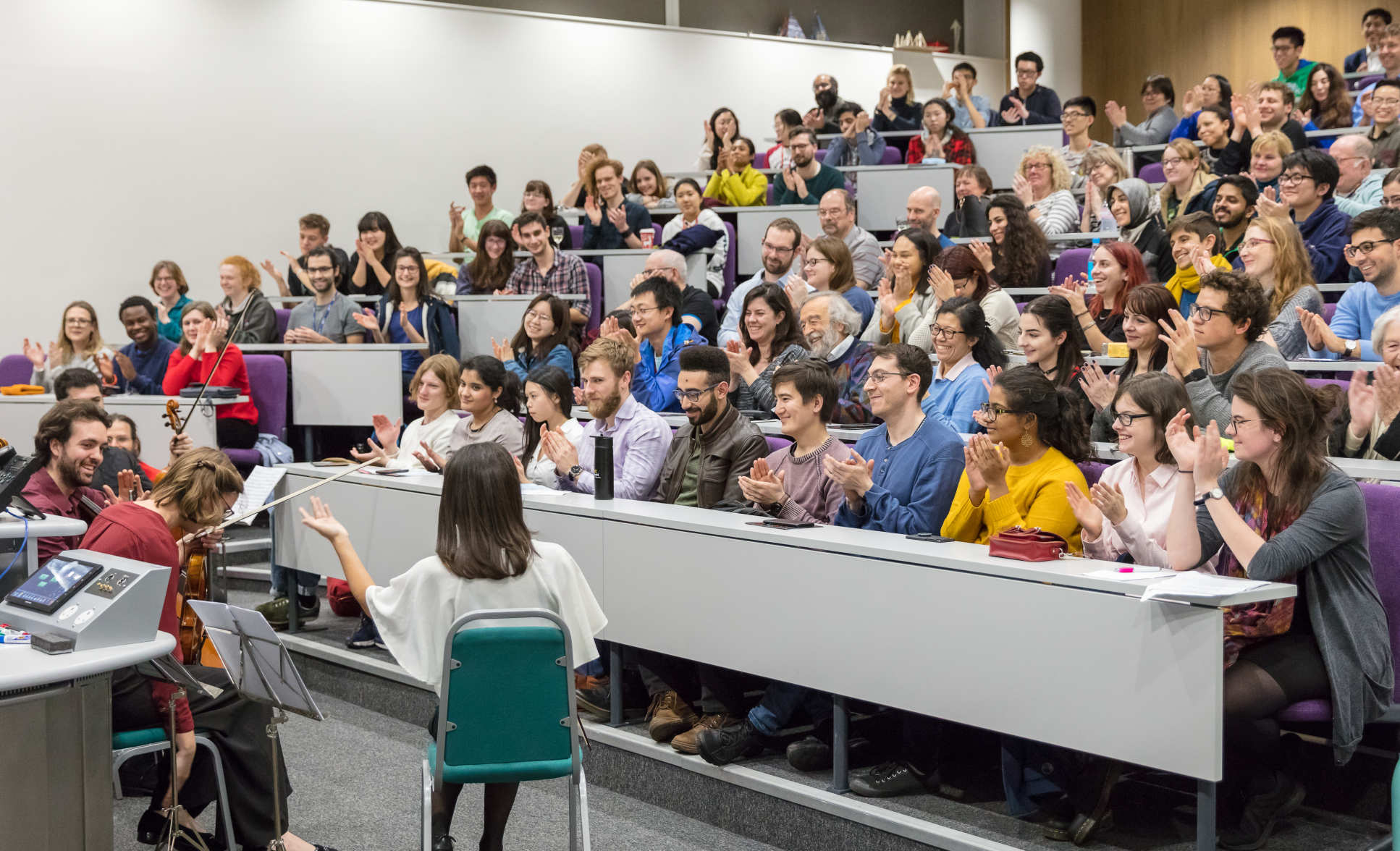
Predicting Crowd Behaviours
Imperial PhD students Simon Scholler and Rafael Bailo explained how crowd behaviours, such as car traffic, pedestrian movements or even the swimming behaviour of sperm cells can be predictably modelled using mathematical equations. Mr Scholler, who studies sperm cells, said that the biology of sperm makes it an interesting subject for mathematical modelling because, due to the environment they live in, the patterns in which the sperm swims are unique from other more familiar swimming organisms such as schools of fish.
Similar models can also be applied to the movement patterns of bacteria, which may be important for the formation of bacterial biofilms. Sperm found in different animal species is also known to have different swimming patterns, the biological importance of which is not well understood yet.
Mr Scholler said: “Better understanding of collective swimming can hopefully, in the long run, help to improve infertility treatments and also fertility scoring for artificial insemination”.
Smart Fashion: Imperial Lates 21 Feb 2018
Make sure not to miss the next Imperial Lates event on Thursday 21 February 2019. Next time be prepared to travel to the future as we explore the Smart Fashion to come. Space suits, intelligent clothing, self-renewable textiles and much more is waiting for you!
Register to attend Imperial Lates: Smart Fashion (21 Feb 2019)
–
Images taken by Dan Weill
Article text (excluding photos or graphics) © Imperial College London.
Photos and graphics subject to third party copyright used with permission or © Imperial College London.
Reporter

Bernadeta Dadonaite
Centre for Languages, Culture and Communication

Contact details
Email: press.office@imperial.ac.uk
Show all stories by this author



